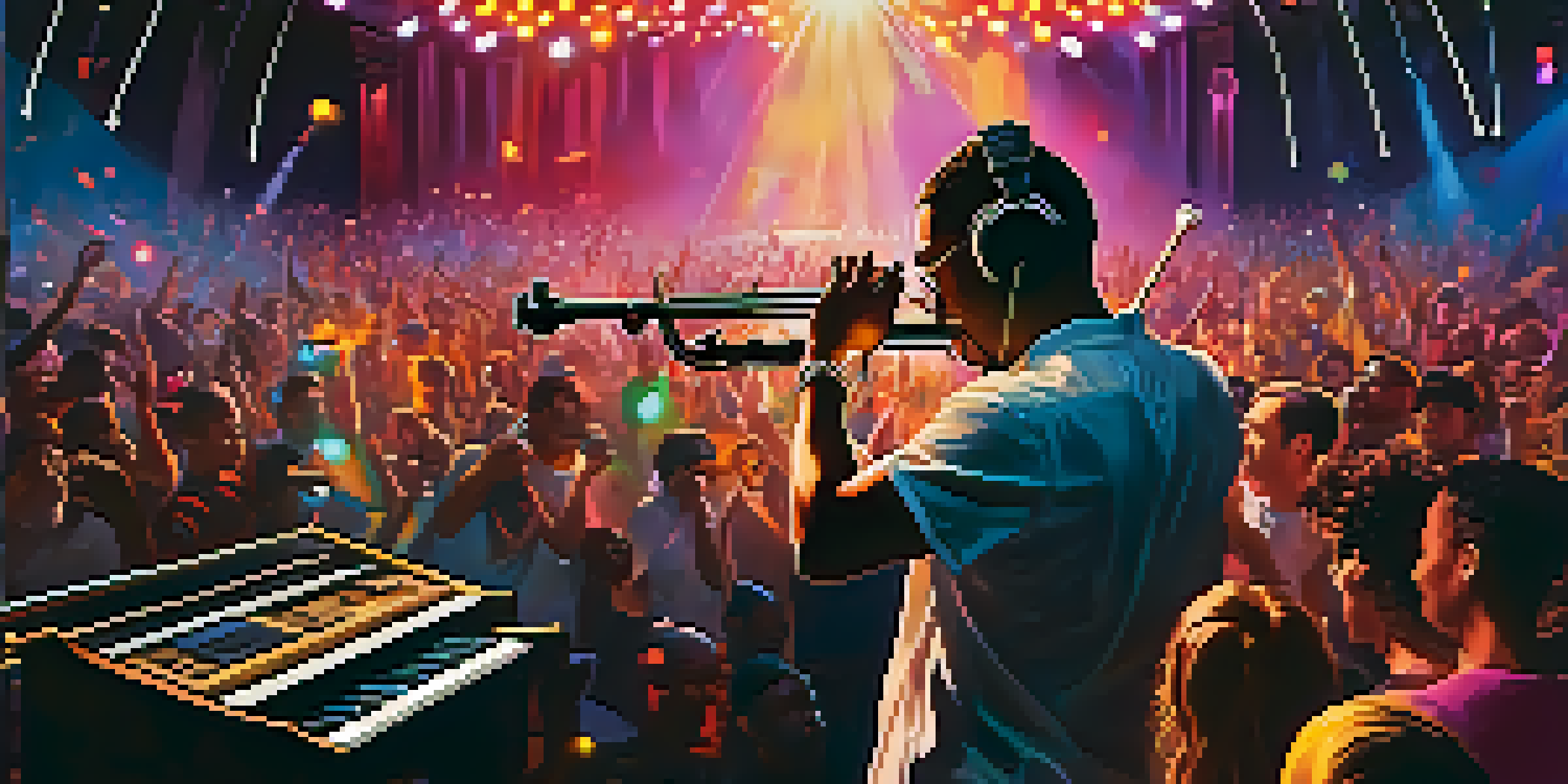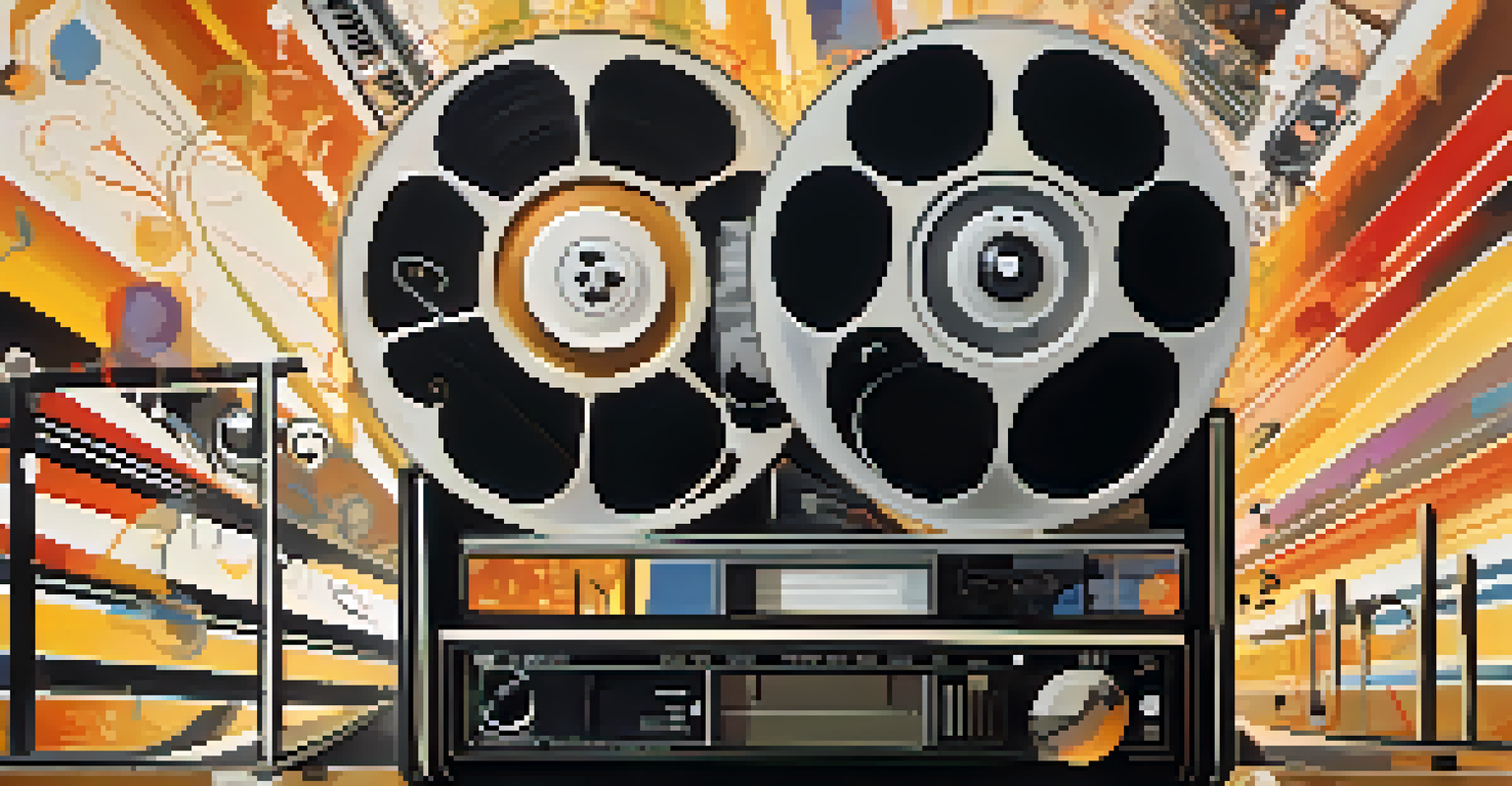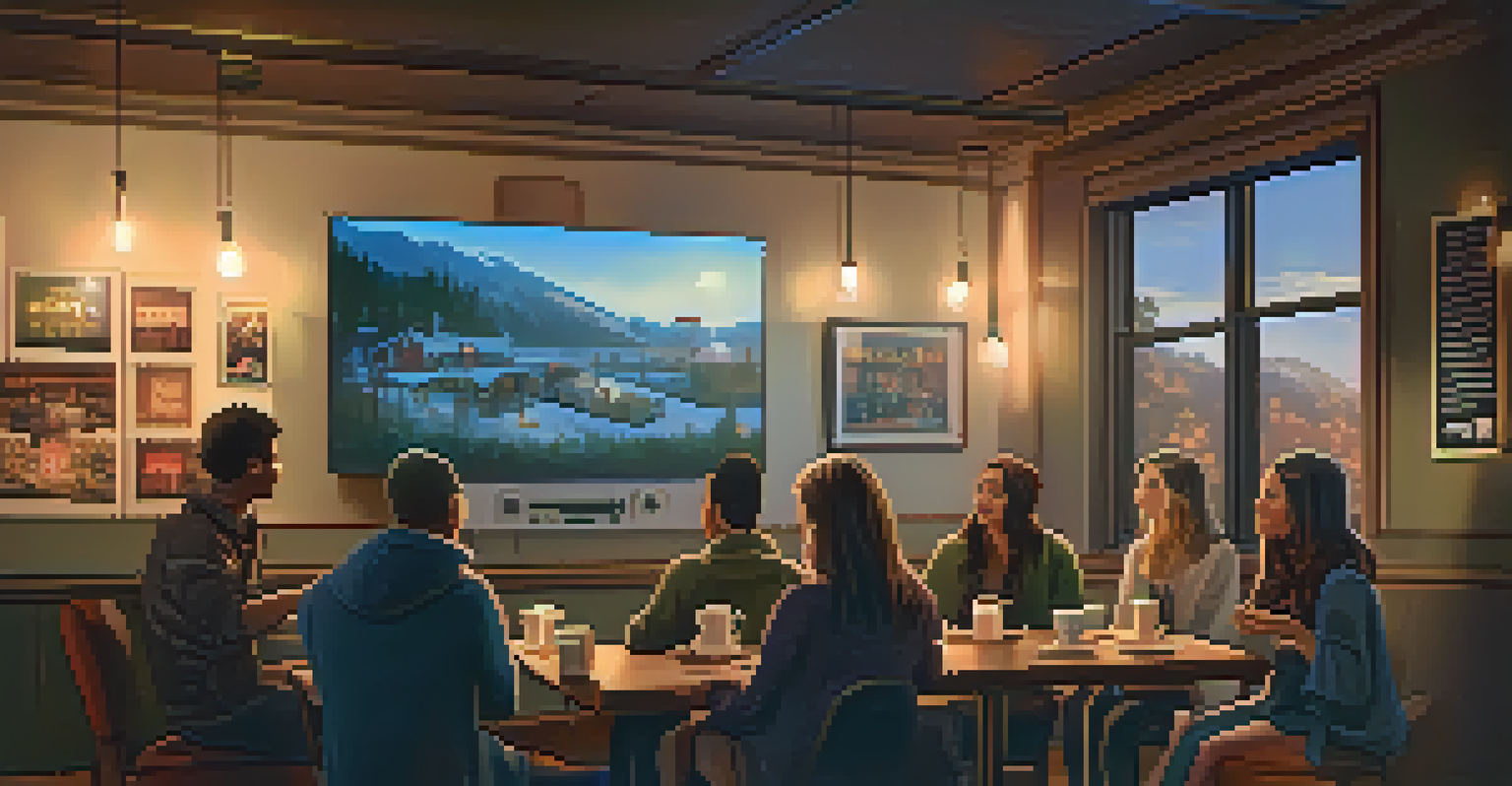Crossover Genres in Film Soundtracks: A Sonic Experience

Understanding Crossover Genres in Film Soundtracks
Crossover genres in film soundtracks blend different musical styles to create a unique listening experience. Imagine a movie where classical orchestration meets hip-hop beats; this fusion can elevate the film's emotional landscape. By combining genres, composers can tap into diverse audiences, making the soundtrack more relatable and engaging.
Music is the shorthand of emotion.
These cross-genre collaborations can result in soundtracks that resonate on multiple levels. For instance, a romantic comedy might feature both upbeat pop songs and soulful ballads, appealing to fans of various musical tastes. This strategy not only enhances storytelling but also broadens the film's reach in terms of audience demographics.
Ultimately, crossover genres reflect the evolving nature of music and culture. As artists experiment with different styles, they create a rich tapestry of sounds that enriches the cinematic experience. This fusion invites listeners to explore new musical territories while enjoying the film.
The Role of Composers in Crossover Soundtracks
Composers are the architects behind crossover soundtracks, skillfully blending elements from various genres. They have the unique challenge of creating music that complements the film's narrative while also standing out on its own. This requires a deep understanding of both musical theory and the emotional cues of the film.

For example, consider Hans Zimmer's work in 'Inception.' His incorporation of electronic sounds alongside orchestral elements creates a tension that mirrors the film's complex plot. Such innovative approaches encourage viewers to engage with the film on a deeper level, as the music enhances both the visuals and the storyline.
Crossover Soundtracks Enhance Emotion
Combining different musical genres in film soundtracks elevates storytelling by evoking specific emotions and creating deeper connections with the audience.
Moreover, composers often collaborate with artists from different genres to achieve a seamless blend. These partnerships can result in unexpected and memorable soundscapes that surprise audiences. Through this collaborative spirit, composers push the boundaries of traditional film music.
Iconic Examples of Crossover Genres in Film Soundtracks
A great illustration of crossover genres can be seen in the soundtrack for 'Guardians of the Galaxy.' The blend of classic rock and contemporary pop not only serves as nostalgia for older audiences but also introduces younger viewers to timeless hits. Each track is carefully selected to fit the film's quirky tone while appealing to a diverse audience.
The only way to make sense out of change is to plunge into it, move with it, and join the dance.
Another notable example is the 'Black Panther' soundtrack, which merges traditional African sounds with modern hip-hop. This fusion not only enhances the film's cultural themes but also showcases a celebration of identity and heritage. The result is a powerful auditory experience that resonates with audiences worldwide.
These examples demonstrate how crossover soundtracks can transcend genres and create a lasting impact on the viewer. By combining different musical styles, filmmakers can craft a unique atmosphere that elevates the cinematic experience.
How Crossover Soundtracks Enhance Storytelling
Crossover soundtracks play a crucial role in storytelling by evoking specific emotions at key moments. Music has a unique ability to draw viewers into the narrative, enhancing their connection to the characters and plot. When genres intersect, the resulting soundscapes can add layers of meaning to the story being told.
For instance, in 'La La Land,' the blending of jazz with contemporary musical elements creates a vibrant backdrop for the characters' dreams and aspirations. This combination not only reflects the film's setting but also helps articulate the characters' emotional journeys. The soundtrack becomes a character in its own right, influencing how viewers perceive the story.
Composers Craft Unique Musical Fusions
Composers skillfully blend various musical elements to create soundtracks that not only complement the film's narrative but also stand out as memorable pieces of art.
Ultimately, crossover soundtracks enrich the storytelling experience by offering a multi-dimensional approach to music in film. By integrating various genres, filmmakers create a more immersive experience that resonates with viewers on different emotional levels.
The Impact of Technology on Crossover Soundtracks
In today's digital age, technology has revolutionized the way crossover soundtracks are created and produced. Advanced software and tools allow composers to experiment with blending genres more easily than ever before. This technological evolution fosters creativity and encourages artists to push their boundaries.
For example, digital audio workstations enable musicians to layer sounds from different genres seamlessly. This capability allows for a diverse range of influences to come together in a cohesive way, resulting in rich and dynamic soundtracks. With technology as a tool, the possibilities for musical experimentation are virtually limitless.
As technology continues to evolve, we can expect to see even more innovative crossover soundtracks in the future. The blending of genres will likely expand, offering new and exciting sonic experiences for audiences worldwide.
Audience Reception of Crossover Soundtracks
The reception of crossover soundtracks has been overwhelmingly positive, as audiences appreciate the variety and creativity they bring. Listeners often find joy in discovering new music through films, as soundtracks serve as a gateway to different genres. This phenomenon encourages a more inclusive music culture that celebrates diversity.
Moreover, crossover soundtracks can lead to increased sales and streaming numbers for featured artists. When a song from a lesser-known genre is placed in a popular film, it can lead to newfound fame and recognition for the artist. This symbiotic relationship between film and music enhances the visibility of various genres.
Technology Fuels Musical Innovation
Advancements in technology enable composers to experiment with genre blending, resulting in innovative soundscapes that push the boundaries of traditional film music.
Ultimately, audiences respond to crossover soundtracks with enthusiasm, as they offer a refreshing take on traditional film music. By embracing different genres, filmmakers can create soundtracks that resonate with a broader audience, making the viewing experience even more enjoyable.
The Future of Crossover Genres in Film Soundtracks
As we look to the future, the potential for crossover genres in film soundtracks appears limitless. With an ever-evolving music landscape and the rise of diverse artists, filmmakers have a wealth of options to explore. This evolution will likely lead to even more innovative soundscapes that challenge conventional norms.
We may see an increase in collaborations between artists from different backgrounds, resulting in soundtracks that reflect the richness of global music. This fusion can foster cultural exchange and promote understanding among audiences. By embracing this diversity, filmmakers can create soundtracks that resonate on a deeper level.

In conclusion, the future of crossover soundtracks holds exciting possibilities for both filmmakers and audiences. As genres merge and evolve, we can expect to hear a symphony of sounds that enrich the cinematic experience.